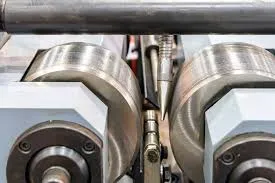
-
 Afrikaans
Afrikaans -
 Albanian
Albanian -
 Amharic
Amharic -
 Arabic
Arabic -
 Armenian
Armenian -
 Azerbaijani
Azerbaijani -
 Basque
Basque -
 Belarusian
Belarusian -
 Bengali
Bengali -
 Bosnian
Bosnian -
 Bulgarian
Bulgarian -
 Catalan
Catalan -
 Cebuano
Cebuano -
 Corsican
Corsican -
 Croatian
Croatian -
 Czech
Czech -
 Danish
Danish -
 Dutch
Dutch -
 English
English -
 Esperanto
Esperanto -
 Estonian
Estonian -
 Finnish
Finnish -
 French
French -
 Frisian
Frisian -
 Galician
Galician -
 Georgian
Georgian -
 German
German -
 Greek
Greek -
 Gujarati
Gujarati -
 Haitian Creole
Haitian Creole -
 hausa
hausa -
 hawaiian
hawaiian -
 Hebrew
Hebrew -
 Hindi
Hindi -
 Miao
Miao -
 Hungarian
Hungarian -
 Icelandic
Icelandic -
 igbo
igbo -
 Indonesian
Indonesian -
 irish
irish -
 Italian
Italian -
 Japanese
Japanese -
 Javanese
Javanese -
 Kannada
Kannada -
 kazakh
kazakh -
 Khmer
Khmer -
 Rwandese
Rwandese -
 Korean
Korean -
 Kurdish
Kurdish -
 Kyrgyz
Kyrgyz -
 Lao
Lao -
 Latin
Latin -
 Latvian
Latvian -
 Lithuanian
Lithuanian -
 Luxembourgish
Luxembourgish -
 Macedonian
Macedonian -
 Malgashi
Malgashi -
 Malay
Malay -
 Malayalam
Malayalam -
 Maltese
Maltese -
 Maori
Maori -
 Marathi
Marathi -
 Mongolian
Mongolian -
 Myanmar
Myanmar -
 Nepali
Nepali -
 Norwegian
Norwegian -
 Norwegian
Norwegian -
 Occitan
Occitan -
 Pashto
Pashto -
 Persian
Persian -
 Polish
Polish -
 Portuguese
Portuguese -
 Punjabi
Punjabi -
 Romanian
Romanian -
 Russian
Russian -
 Samoan
Samoan -
 Scottish Gaelic
Scottish Gaelic -
 Serbian
Serbian -
 Sesotho
Sesotho -
 Shona
Shona -
 Sindhi
Sindhi -
 Sinhala
Sinhala -
 Slovak
Slovak -
 Slovenian
Slovenian -
 Somali
Somali -
 Spanish
Spanish -
 Sundanese
Sundanese -
 Swahili
Swahili -
 Swedish
Swedish -
 Tagalog
Tagalog -
 Tajik
Tajik -
 Tamil
Tamil -
 Tatar
Tatar -
 Telugu
Telugu -
 Thai
Thai -
 Turkish
Turkish -
 Turkmen
Turkmen -
 Ukrainian
Ukrainian -
 Urdu
Urdu -
 Uighur
Uighur -
 Uzbek
Uzbek -
 Vietnamese
Vietnamese -
 Welsh
Welsh -
 Bantu
Bantu -
 Yiddish
Yiddish -
 Yoruba
Yoruba -
 Zulu
Zulu
Affordable Thread Rolling Machines - Efficient and Reliable Solutions
The Working Mechanism of Cheap Thread Rolling Machines
Thread rolling machines play a crucial role in the manufacturing sector, particularly in the production of fasteners and threaded components. These machines allow for efficient and precise formation of threads on cylindrical surfaces, offering significant advantages over traditional cutting methods. Understanding how cheap thread rolling machines work can provide insights into their functionality, application, and benefits.
Basic Operation of Thread Rolling Machines
The fundamental principle behind thread rolling is that it reshapes metal rather than removing material. This process, known as cold forming, involves two or more dies that impart the desired thread profile onto a blank workpiece. Cheap thread rolling machines are typically designed for mass production, making them a cost-effective solution for manufacturers.
The operation begins with the workpiece being fed into the machine. The rolling dies, usually made of hardened steel, are positioned around the workpiece. As the machine operates, the dies rotate and apply pressure to the metal, causing it to flow and take on the shape of the threads carved into the dies. This not only results in a precise thread form but also enhances the mechanical properties of the metal, often yielding a stronger product compared to cut threads.
Types of Thread Rolling Machines
There are several types of thread rolling machines available on the market, each designed for specific applications. The two most commonly used types are flat rolling machines and cylindrical rolling machines. Flat rolling machines are typically used for larger components, while cylindrical machines are ideal for smaller, more intricate parts.
cheap thread rolling machine working

Cheap thread rolling machines are often designed for simplicity and efficiency. They may lack some of the advanced features of higher-end models, but they can still produce high-quality threaded components at a fraction of the cost. These machines are particularly popular among small to medium-sized enterprises seeking to optimize production without incurring significant capital expenditures.
Advantages of Using Thread Rolling Machines
The advantages of using cheap thread rolling machines are manifold. Firstly, the cold forming process reduces waste, as material is reshaped instead of cut away. This makes it an environmentally friendly option. Secondly, the strength and durability of rolled threads are generally superior, leading to lower failure rates in applications such as automotive and aerospace industries.
Furthermore, thread rolling allows for a faster production rate. With the ability to produce threads quickly and accurately, manufacturers can meet high demand without compromising quality. This not only improves productivity but also enhances profitability.
Conclusion
In summary, cheap thread rolling machines represent an effective solution for manufacturing threaded components. Their ability to combine efficiency, precision, and cost-effectiveness makes them an attractive option for businesses of all sizes. As industries continue to evolve, the reliance on such machines is likely to increase, highlighting the importance of understanding their workings and advantages in today’s manufacturing landscape. Adopting affordable thread rolling technology can significantly streamline operations while maintaining high standards of quality.
